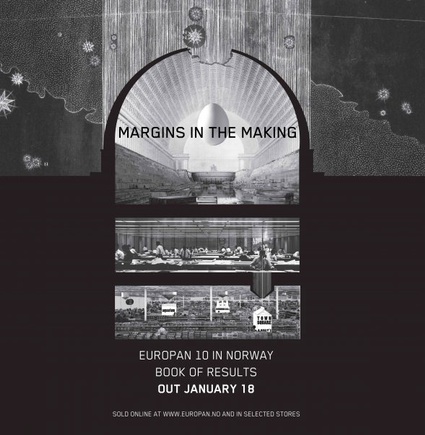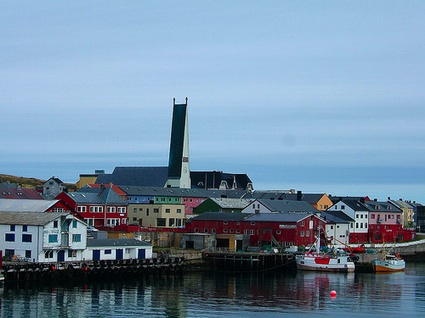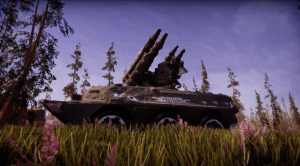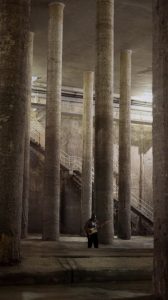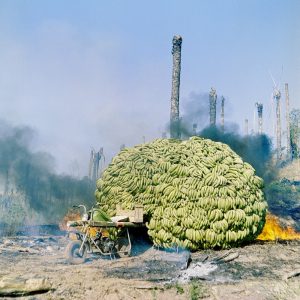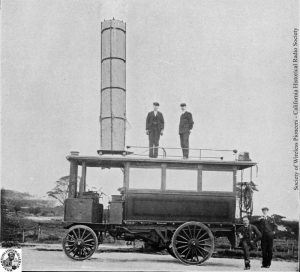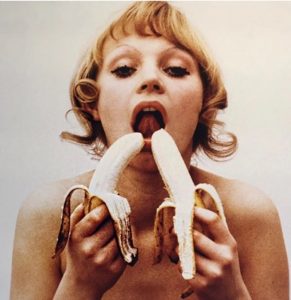The winners of the Europan 10 competition have been announced a few days ago. Europan is a European federation of national organisations, which manages architectural competitions followed by building or study projects. Only young European architects are invited direct their ideas and visions to issues of city development, urban planning and architecture.
Being a jury member of Europan Norway has certainly been one of the highlights of 2009 for me. Not only because i learnt so much (though i’m not so sure that the jury learned much from me!) but also because one of the sites we had to get to know turned out to be extremely interesting under several aspects.
First of all, Vardø is ridiculously beautiful:
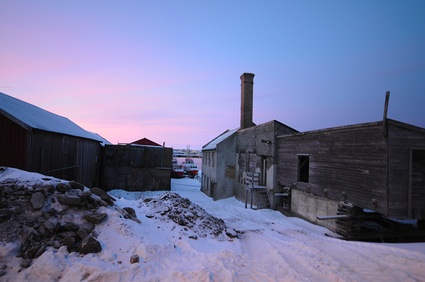 Photo by Øystein Rø
Photo by Øystein Rø
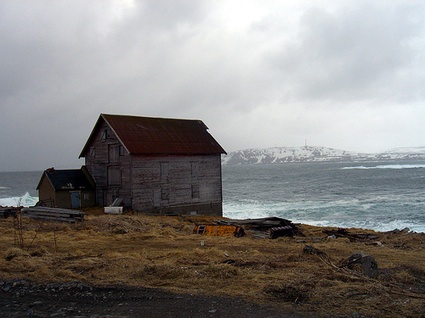 Vardø and the Arctic Ocean. Image by kalev kevad
Vardø and the Arctic Ocean. Image by kalev kevad
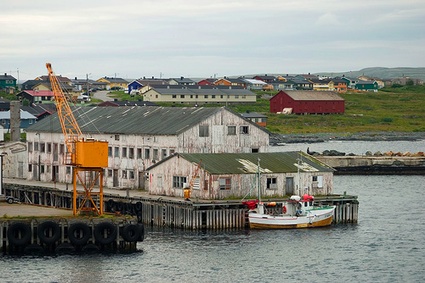 Image by domestictimes / Augusto Mia Battaglia
Image by domestictimes / Augusto Mia Battaglia
Then there’s the location of Vardø. It is Northern Norway’s oldest and easternmost town and as such is swept in darkness 2 months of the year and exposed to cold winds from the Arctic. The motto in Vardø’s coat of arm is most suggestive: Cedant tenebrae soli – darkness shall give way to the sun.
Vardø was once a prosperous trade centre with strong ties to Russia. In recent years, however, the place has been hit hard due to the changes in the fishing industry, previously a corner stone of the society. Young people are leaving the area due to the harsh weather conditions and what appears to be unexciting professional perspectives. With its strikingly beautiful landscape and charming architecture, Vardø has its place on the touristic map. If you want to visit it, a boat will sail you there and give you one hour and not one minute more to have a tour and sail to your next destination.
The projects submitted to the competition for the Varø site had to respond to the Europan 10 topic of Regeneration: in areas with a strong identity but with obsolete functions, how can spaces be adapted to a new dynamic of uses? In the case of a site such as Vardø, the regeneration involves changes in the use(s) of the site rather than a modification of the space itself.
The jury looked for proposals that dealt with strategies, and investigated the historical and geographical context. Each of the winning entries is fascinating in its own way. Taken together they form a truly thought-provoking perspective on what young architects can bring to local urban challenges.
The winning project, Repositioning the Remote, puts forward several possible short-, medium- and long-term strategies for the regeneration of Vardø. The runner up project, Datarock, devises a bold but pragmatic strategy. The honorable mention, The White, is an out of this world meta-project that invites us to imagine the contribution that mythology could bring to the future of the Norwegian city.
The First Prize went to Repositioning the Remote
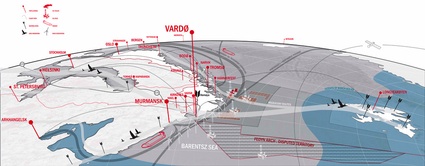
Oh! This is nice, i can copy paste the text on the competition website as i’m the one who wrote it ages ago for the catalog Europan 10 in Norway – Book of Results:
The strategy proposed by Repositioning the Remote is articulated around short-, mid- and long-term objectives which embrace the cultural, industrial and ecological facets of Vardø.
First, cultural spaces would take the place of abandoned industrial structures, providing a boost to the local community and attracting interest from outside the area. The winning team forecasts that by 2030, Vardø will play an important role in Norwegian energy production by monitoring, exploiting and servicing nearby oil reserves. Concurrently, Vardø will consolidate its unique position as an outpost of ornithology and marine biology in the Arctic, protecting the fragile ecology of the Barents region.
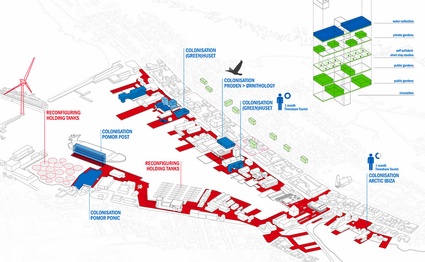
In the distant future, Vardø will have to face pressing challenges which range from finding a place in Norway’s post-oil economy, meeting the effects of global warming and raising aquacultural and hothouse production to a higher level of self-sufficiency. Repositioning the Remote suggests that Vardø take advantage of its powerful offshore Arctic winds to create energy for local needs, while distributing the surplus to the southern regions. Vardø’s harbour will be reconfigured to face the rising level of the sea, encouraging new modes of production in the process. In the meantime, the interstitial and reconfigured harbour area would be welcoming a 24-hour sunlit greenhouse to produce Arctic char and stock king crab for trade abroad.
The authors of Repositioning the Remote are: Team leader Ana Reis (Portugal) with the contribution of Ross Langdon, (Australia), Kelly Doran (Canada) and Louis Hall (UK)
The runner-up is Datarock
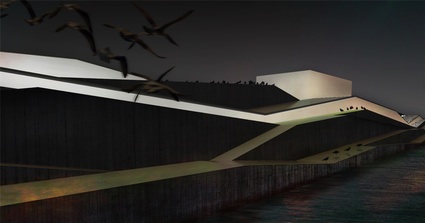 Dark perspective
Dark perspective
Isn’t this fantastic? I can close my eyes and copy/paste the text explaining Datarock because i wrote it as well for the catalog.
Datarock turns the daunting remoteness and Arctic climate of the city into its biggest advantage, while at the same time providing an answer to the world’s ever-growing need for the storage of digital data. In fact, Datarock suggests the creation of a brand new industry for the area: the data centre. Also called a ‘server farm’, a data centre is a facility that stores digital information made available on the Internet. Far from being as intangible as the goods they store, these infrastructures require huge amounts of energy to cool down. Installing them in extremely cold but inhabitable regions is therefore a natural solution.
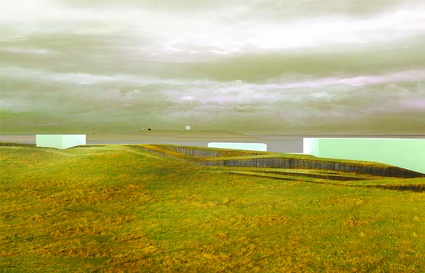 Data in landscape
Data in landscape
Datarock is not designed to function as a separate entity, but rather to service Vardø. The warmth continuously produced by the data centre would be used to heat new and existing public spaces while answering the daily needs of the city’s inhabitants. The data centre itself is fused within the landscape; half buried, half submerged, it appears on the horizon like a rock from which three luminous cubes emerge. Located on the edge of the city limits, it evokes the atmosphere of a lighthouse.
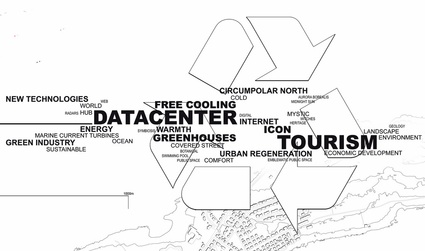 Datacentre tourism
Datacentre tourism
Interestingly, the project proposes that this industry would create a new form of ‘digital tourism’ in Vardø. People will flock to see the material face of the Internet, while sustainable energy practices will exploit the heat produced by the massive machines for various facilities in the area.
The authors of Datarock are: team leader Gauthier Le romancer (France) in association with Guillaume Derrien (France).
The White received an Honorable Mention
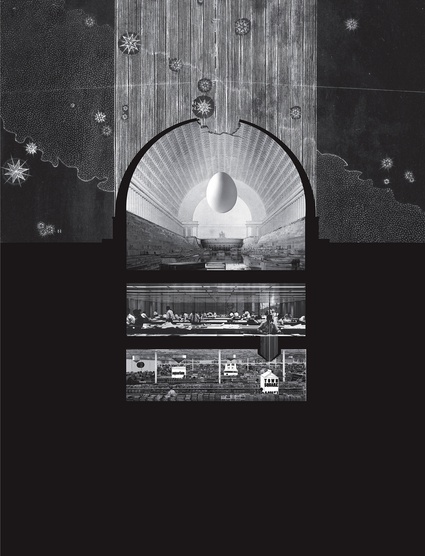 The Myth is dying. It is about to be defeated. There is a war between the two worlds: Rationality and Myth. By these two phrases from Adorno and Horkheimer The White states the historical and mythological context of the high north in the minds of the Europeans. The White calls upon ancient cartography and the texts by the likes of Dante Alighieri, Gilles Deleuze, Senecae to question the sensibility of envisioning Vardø under its sole oil-producing, tourist magnet or business potentials. The White might not propose the most straight-forward and factual solution but it certainly brings a new twist on the Vardø discussions. The discussion we had during the jury process and the ones that all the winners of the competition will have very soon in Vardø to reflect on the new profile and strategy for the city. The White has a slight Italo Calvino touch. It reminded me as well of the work of Etienne-Louis Boullée which i discovered as a teenager in one of my favourite movie, The Belly of an Architect.
The Myth is dying. It is about to be defeated. There is a war between the two worlds: Rationality and Myth. By these two phrases from Adorno and Horkheimer The White states the historical and mythological context of the high north in the minds of the Europeans. The White calls upon ancient cartography and the texts by the likes of Dante Alighieri, Gilles Deleuze, Senecae to question the sensibility of envisioning Vardø under its sole oil-producing, tourist magnet or business potentials. The White might not propose the most straight-forward and factual solution but it certainly brings a new twist on the Vardø discussions. The discussion we had during the jury process and the ones that all the winners of the competition will have very soon in Vardø to reflect on the new profile and strategy for the city. The White has a slight Italo Calvino touch. It reminded me as well of the work of Etienne-Louis Boullée which i discovered as a teenager in one of my favourite movie, The Belly of an Architect.
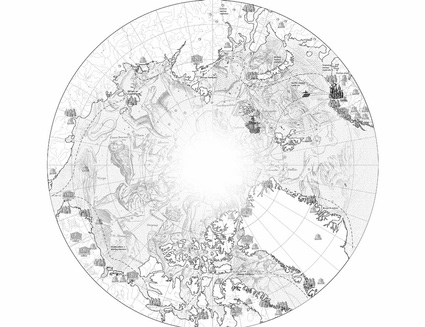
The White invites Vardø to embrace its geographical position at the border of reality and mythology. Vardø is the gate to the unknown. In the architects own words: The collective unconscious characterized Vardø as the last city of the North, populated by devils, witches, monsters and men praying to the Moon.
Colonizing Vardø would correspond to the fall of Myth, to the decay of its own identity: as Odysseus destroyed the Sirens imposing his reason to their irrational song. Therefore, to reject the logical fate of Vardø we enhance the power of Myth. We do not expect to reverse the machine of rationality but rather to erode its internal processes inserting a worm of doubt.
The authors of The White are: team leader Federico Perugini (Italy), in association with Francensco Marullo, (Italy), Valentina Signore (Italy) and Alejandra Climent Monsalve (Spain.)
More information about the competition and the winning entries in Europan 10 in Norway – Book of Results, edited by Espen Røyseland and Øystein Rø.
